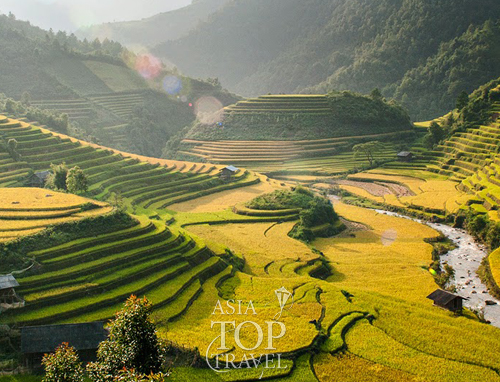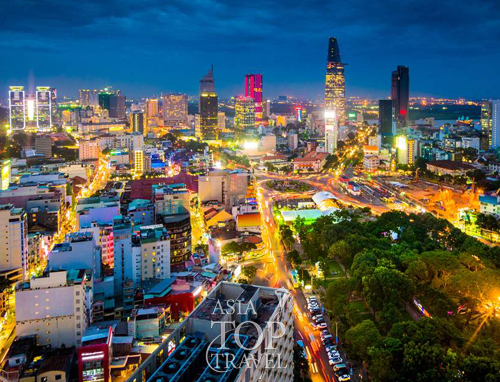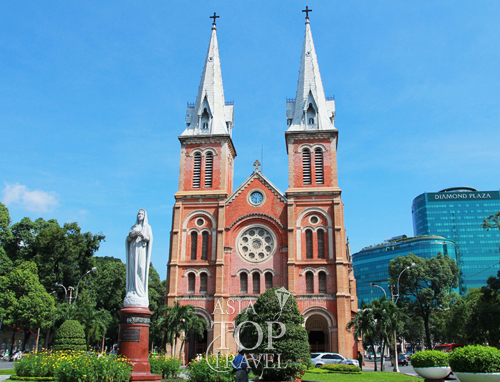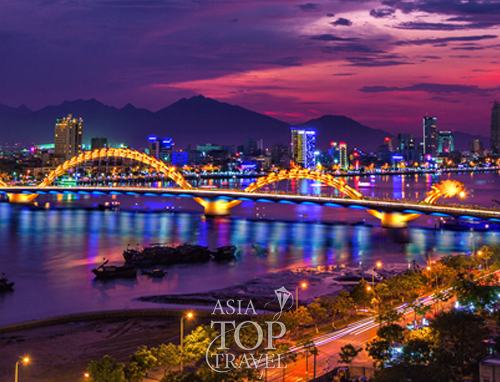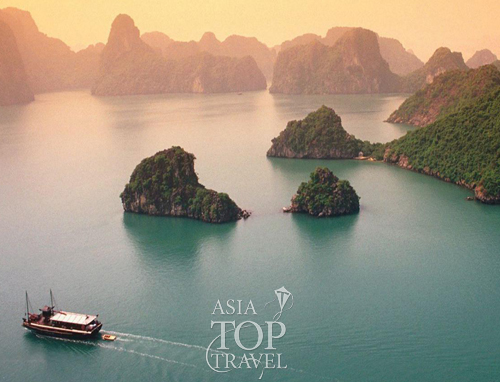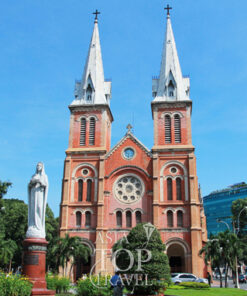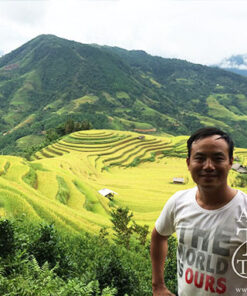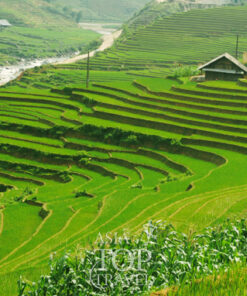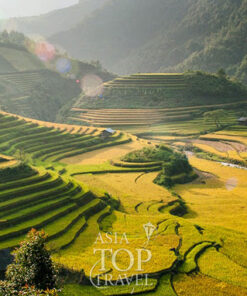Time difference
GMT: + 7 hours
Voltage & Electricity
Vietnam operates on a 220V supply voltage and 50Hz.
3 associated plug types can be used:
– Type A: two flat parallel pins
– Type C: two round pins
– Type F: two round pins with two earth clips on the side
Language
Vietnamese is the national language, spoken by around 87% population as the first language. However, there are regional and intra-regional variations in dialect throughout the country. Some speak English and French.
Currency & Money
The Vietnamese currency is the dong (VND).
ATMs are found throughout the country, even in small towns. Cash is mainly used but debit and credit cards are accepted in many places.
Tipping
A service charge is usually included in larger restaurants and hotels. So tipping is highly appreciate in smaller restaurants but not customary. You can eventually tip baggage porters, drivers and guides.
Visas
Visa exemptions (can apply E-visa):
30 days maximum: Cambodia, Thailand, Malaysia, Singapore, Indonesia, Laos
21 days maximum: Philippines
15 days maximum: Japan, South Korea, Sweden, Norway, Denmark, Russia, Finland
Free visa 15 days, can apply E-visa after 15 days: France, Netherland, Italy, Spain, Denmark and Norway.
No free visa, can apply E-via: Armenia, Australia, Azerbaijan, Belarus, Bruney, Bulgaria, Canada, Chile, Chine (Not apply to Chinese e-passport holders), Colombia, Cuba, Czech Republic, Germany, Greece, Hungary, India, Ireland, Kazakhstan, Luxembourg, Mongolia, Myanmar, New Zealand, Panama, Peru, Poland, Romania, Slovakia, Timor Leste, United Arab Emirates, United Kingdom of Great Britain & Northern Ireland, United States of America, Uruguay, Venezuela
No free visa, can apply E-visa: Austria, Switzerland, Belgium, Turkey
Conditions
Valid passport with expired date of more than at least 3 months to immigration date
Booked international flight ticket
Ways to apply
1: You might get it at the embassy
2: Apply E-Visa on the official website: https://evisa.xuatnhapcanh.gov.vn/
3: Asia Top Travel do a visa invitation letter/visa approval letter (contact us for more information and price details)
What to pack
You don’t need to over pack as you will be able to buy things in Vietnam. Make sure to bring some quick dry clothes, a rain jacket, a hat, and a good pair of trainers.
Public Holidays
Jan 1: New Year’s Day
Feb 3: Founding Day of Communist Party of Vietnam
Apr 30: Liberation Day of South Vietnam & Saigon
May 1: Labor Day
May 19: Ho Chi Minh’s birthday
May 28: Holiday in commemoration of the birth, the enlightenment and the death of the Buddha
Sept 2: National Day
Sept 3: Day to commemorate the death of Ho Chi Minh in 1969
Nov: Birthday of Confucius (movable holiday depending on the moon calendar)
Opening hours
Banks & administrations: 7am to 11am – 1pm to 5pm
Shops: 6am to 8pm every day (closed the 5 first days of lunar year)
Rules of good conduct
– In Vietnam, we greet ourselves with a hand check, even both hands sometimes.
– Avoid wearing provocative clothes especially in the countryside and in the temples & pagodas as a sign of respect.
– Take your shoes off at the entrance of houses, pagodas & temples.
– Never take photos of people without asking them first.
Climate
Vietnam is located in both a tropical and a temperate zone. It is characterized by strong monsoon influences, but has a considerable amount of sun, a high rate of rainfall, and high humidity. Regions located near the tropics and in the mountainous regions are endowed with a temperate climate.
The monsoon climate also influences to the changes of the tropical humidity. In general, in Vietnam there are two seasons, the cold season occurs from November to April and the hot season from May to October.
Festivals in Vietnam
Another good reason to come to Vietnam is the festivals. This is a good way to immerse yourself in the culture. The following festivals are held every year, the exact date depends on the Lunar Calendar.
1. Tet Nguyen Dan (Lunar New Year) – one week between January and February
Back thousands of years, Vietnamese farmers were celebrating Lunar New Year (called Tet in Vietnam) to thanks gods for the arrival of spring.
Today Vietnamese are welcoming the New Year with prayers, dinners, gift exchanges between family members.
During the biggest Festival of the year, streets are filled with people performing traditional dances with drums, bells, gong and firecrackers. You might also find locals practicing religious celebrations (visiting temples, lighting fireworks, etc… ).
This is best to be in larger cities to celebrate Tet, especially in Hanoi.
2. Lim Festival – Mid-February
Lim Festival is where you can see UNESCO-listed quan ho folk singing performances and other traditional games. It is celebrated in Lim Village, only 18 km from Hanoi.
3. Perfume Festival – mid-February/March
The Perfume Festival is pilgrimage from all over Vietnam to Hanoi’s Perfume Pagoda where the Festival takes place.
4. Hue Festival – every 2 year in April, May or June
Enjoy a wild range of cultural events, games and performances in UNESCO listed Hue City. Hue Festival is one of the most popular in Vietnam because it recreates the traditional customs of the Nguyen Dynasty.
5. Buddha’s Birthday – Early May
On the 8th day of the 4th lunar month, temples are decorated with fruits, flowers, and various Vietnamese dishes. The best place to enjoy this festival is Hoi An for its monks procession and evening parade.
6. Wandering Souls Day – Early September
The locals believe that the spirits of their ancestors are able to visit their home on the 15th day of the 7th lunar month. On the eve of the festival, families make their way to Buddhist temples and graves to offer gifts and prayers to their ancestors. The best place to attend to this festival is Hue even if it’s celebrated all over the county.
7. Mid-Autumn Festival – mid-September
This festival features many different street performances such as colorful lantern processions, lion dances, arts exhibitions and food booths.
The best place to enjoy this festival is the UNESCO-listed Ancient Town of Hoi An.
8. Hoi An Lantern Festival – 14th day of every month
This is a monthly event transforming the UNESCO-listed Site and especially the Ancient Town into a colorful display of paper lanterns.
1. A cruise in Halong Bay
A night cruise on a junk-boat is the best way to admire the 1600 limestones & islets topped by thick jungle growth that rise from the emeralds waters of the Gulf of Tonkin. In this stunning seascape, some of the islands are hollow, creating majestic caves. Halong Bay, UNESCO World Heritage Site since 1994, has an extraordinary range of biodiversity and features in many movies.
2. Water Puppet Show
Vietnamese water puppetry has a long history. The pond and lakes of the northern plains, where crowds gathered during festival and galas, become the lively stages for the water puppet shows. At a water puppet show, the audience watches boat races, buffalo fights, fox hunts and other rustic scenes amidst the beating of drums and gongs. The characters plough, plant rice seedlings, fish in a pond with a rod and line, scoop water with a bamboo basket hung from a tripod, etc. The show is interspersed with such items as a Dance by the Four Mythical Animals: Dragon, Unicorn, Tortoise, and Phoenix and Dance by the Eight Fairies, in which supernatural beings enjoy festivities alongside people of this world. You can attend this show in the world-famous Thang Long Water Puppet Theatre of Hanoi.
3. Street food tour
Vietnam’s cuisine is rich with many different types of delicious dishes, and the best is in the streets. To know all the secret places & taste the best dishes, take a guided street food tour in the streets of Hanoi or Ho Chi Minh City.
4. Cu Chi Tunnels in HCMC
This visit is captivating not only for the ones interested in military history, but definitely not for claustrophobics. As you crawl on your hands and knees sometimes, immerse yourself in the underground life of Vietnamese Soldiers back in 1948.


